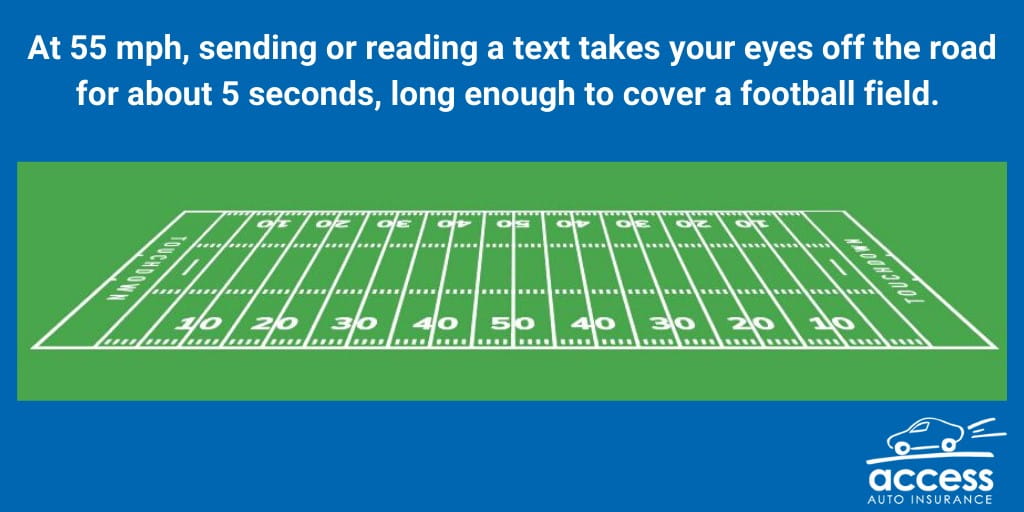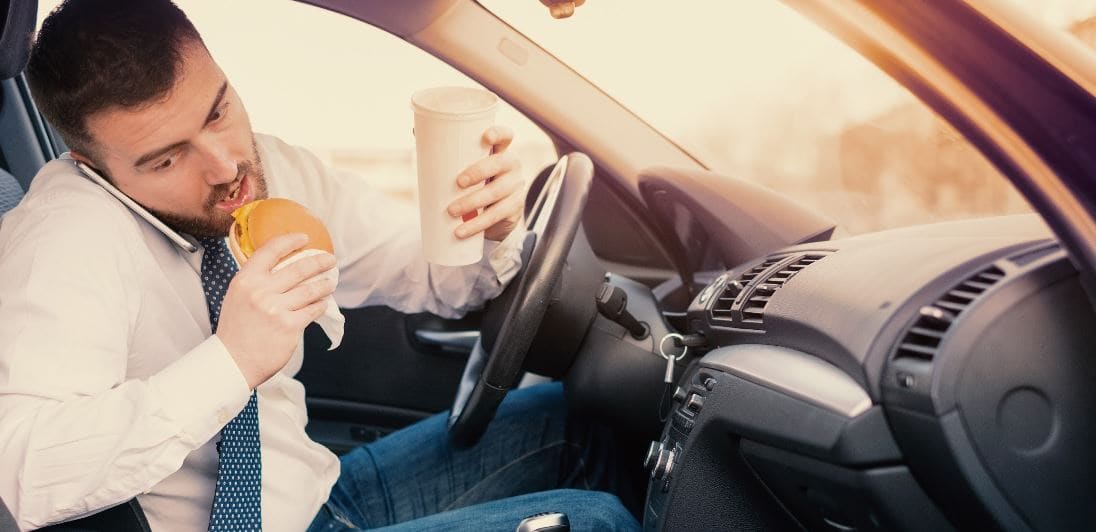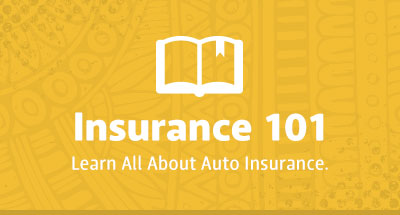What is Distracted Driving?

Distracted driving occurs any time you take your eyes off the road, hands off the wheel, and mind off your primary task: driving safely. Any activity that alters your attention from driving such as texting on your phone, eating or drinking while driving, talking to another person in your vehicle, reaching for the stereo or navigation system. Any non-driving activity you engage in is a potential distraction.
By far, texting is one of the most alarming distractions to date. Reading or sending text messages while driving takes your eyes off the road for approximately 5 seconds. At 55MPH, that’s the same as driving the length of an entire football field blindfolded. Driving safely requires your full attention and any other activities can increase the chances of a car accident.

Distracted Driving Statistics

According to the National Highway Traffic Safety Administration (NHTSA) drivers who are distracted and fail to focus their full attention on the road are the leading cause of most crashes. Here are some eye opening statistics regarding distracted driving.
- According to the Centers for Disease Control and Prevention (CDC), distracted driving is the cause of nine deaths and more than 1,000 injuries every day in the U.S. If that's not enough, using your cellphone while driving creates an enormous potential for death and injury on our roads. In 2018 alone, 2,841 people were killed in motor vehicle crashes involving distracted drivers.
- It’s also estimated that about 400,000 people were injured in crashes involving distracted drivers. Fortunately, the percentage of drivers using cell phones while driving has decreased from 3.3% in 2016 to 2.9% in 2017.
- According to the American Automobile Association (AAA), 31% of drivers are distracted by their pets in the car. While 80% of drivers admitted to driving frequently with their pets, only 17% used a pet restraint, such as a seat belt or kennel.
- Distracted driving such as texting and driving, is the cause of more than 58% of crashes involving teen drivers. New teen drivers have the highest fatality rates of all drivers, making it critical for them to develop good distraction-free driving habits from the start.
If these statistics are startling, consider learning more about distracted driving during distracted driving awareness month. Learn more about this epidemic that's life-threatening for everyone on the road.
Most Common Driving Distractions

The CDC classifies driving distractions in three categories:
Cognitive distractions can cause your mental focus to drift while behind the wheel. Here are some examples:
- Driving under the influence of drugs or alcohol
- Driving while upset or angry (think: road rage)
- Paying attention to a child or pet traveling with you
- Daydreaming or getting lost in thought
- Talking to another person in the car or on the phone
- Thinking about problems at work or home
- Hands-free talking or voice-texting on a cell phone
Manual distractions cause you to take one or both hands off the wheel. Examples include:
- Securing a seatbelt while driving (either your owns or a passenger’s)
- Texting or talking on the phone without a hands-free device
- Touching the dials or buttons that control music, temperature, windows, mirrors, or GPS
- Smoking, or any activity related to smoking(finding and lighting a cigarette)
- Eating, drinking, or cleaning up spilled food or drink
- Reaching for items, such as your wallet, purse or using your hands to assist a child or pet
Visual distractions can cause your eyes to wander away from the road. Examples include:
- Scrolling through email, social media accounts, or other smartphone apps at a stoplight
- Applying or checking your makeup in the rearview mirror
- Looking at a map or adjusting a GPS device
- Looking at a traffic accident or police activity on the side of the road
- Checking the view on a scenic drive
- Searching for items on the floor (passenger seat or backseat of your vehicle)
- Adjusting the air conditioning or heating temperature
- Changing the radio station or music
Tips to Avoid Distracted Driving

Nearly everyone is guilty of some form of distracted driving. That does not mean that it's an activity that you should engage in, especially when you’re behind the wheel. Here are some good ideas to drive safely.
- Focus on driving. Do not let anything divert your attention, actively scan the road, use your mirrors, and watch out for pedestrians and cyclists.
- Store away any possessions or potential distractions that could roll around in the vehicle.
- Make adjustments before you begin driving. Adjust systems like GPS, seats, mirrors, sound, and climate controls before hitting the road. Decide on your route and check traffic conditions ahead of time.
- Finish dressing and personal grooming at home, be ready to go before you get on the road
- If possible eat meals or snacks before or after your trip, not while driving. On the road, avoid messy foods that can be difficult to manage
- Secure children and pets before getting underway. If they need your attention, pull off the road safely to care for them. Reaching for the backseat can cause you to lose control of your vehicle
- Put away electronic devices. Do not use cell phones while driving. even hands-free, except during absolute emergencies. Never use text messaging, email functions, video games, or the internet with a wireless device.
- If another activity requires your full attention, simply pull off the road and stop the vehicle in a safe place. Avoid the temptation altogether and power down your devices while you are driving.
As a general rule, if you cannot devote your full attention to driving because of some other activity, it's a distraction. Take care of it before or after your trip, not while driving.
Become Informed and Do Your Part
Currently, there is no national ban on texting or using a phone while driving, but many states now have laws against texting, talking on a cell phone, and other distractions while driving.
- 20 states and the District of Columbia prohibit school bus drivers from cell phone use while driving
- 21 states and the District of Columbia, Puerto Rico, U.S. Virgin Islands, and Guam banned all drivers from using hand-held phones while driving
- 39 states and the District of Columbia prohibit all cell phone use by novice drivers
- 48 states, the District of Columbia, Puerto Rico, U.S. Virgin Islands, and Guam banned texting while driving for all drivers
Distracted driving can impact you for the rest of your life. Each type of distracted driving increases your risk of a car crash, injury, and even death. For example, reaching for an object increases a driver’s risk of crashing by 800%. Be safe at all times and do not engage in distracted driving. Not only is being an attentive driver a life-saving decision, having the right auto insurance coverage can be of tremendous help in case of an accident. Find out what coverage is best for you by getting a free no-obligation quote with us online. If you prefer to speak to an agent directly we are always available over the phone at 602-922-3595.






